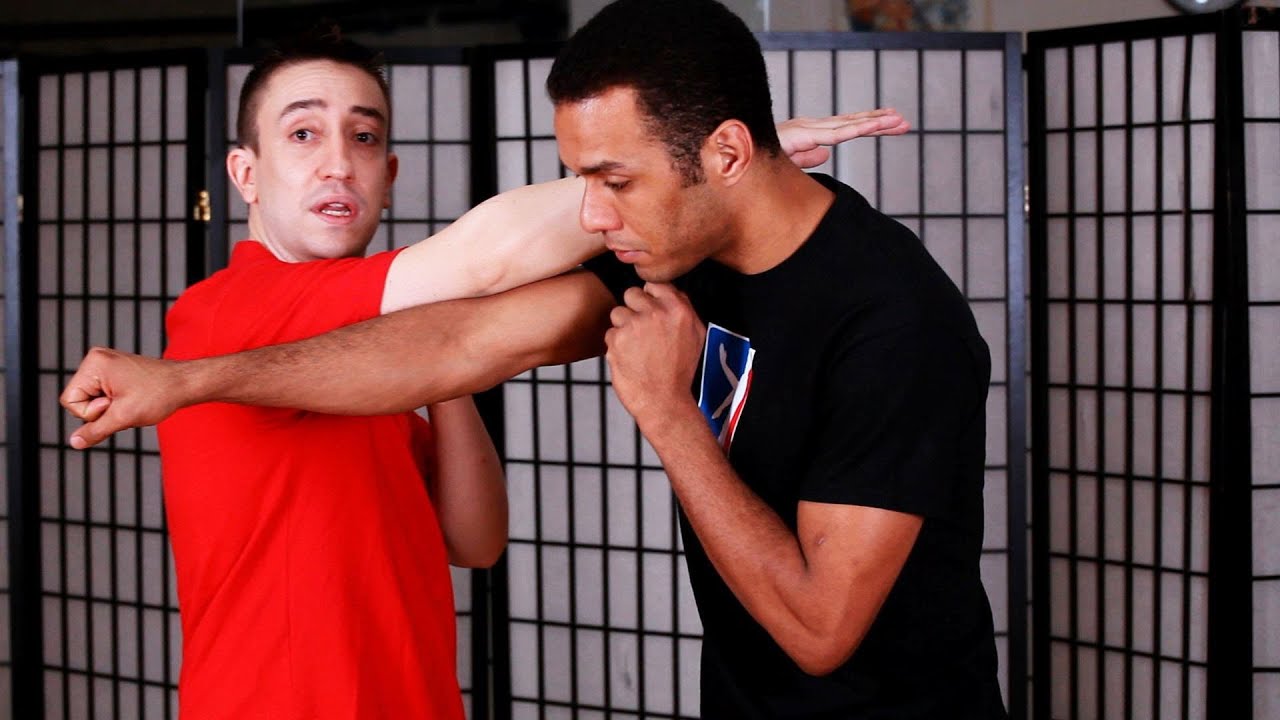How to Do Biu Sau aka Thrusting Hand | Wing Chun
Full Playlist: https://www.youtube.com/playlist?list=PLLALQuK1NDrjD8mIyjOcPsGaJBDQN-6-K
–
–
Watch more How to Do Wing Chun videos: http://www.howcast.com/videos/509882-How-to-Do-Biu-Sau-aka-Thrusting-Hand-Wing-Chun
Biu Jee Sau or Bui Sau in Wing Chun is also another important technique. It comes up a couple times in the Wing Chun system. You actually have it as early as the Siu Nim Tao form. You have the double Biu Jee Sau in the fourth set of the Siu Nim Tao form. But when we’re normally talking about the Biu Jee Sau itself, normally we refer to the version that comes in the Biu Jee form, and that is done a little bit differently, than the way it’s done in the Siu Nim Tao form.
First of all, everything in the Siu Nim Tao Chong Ki level, or I should say most things at the Siu Nim Tao Chong Ki level operate coming from the center. That’s why we have a motto in Wing Chun, which is Kuen Yao Sum Faat which means fist comes from the heart, all right? That means that everything is coming from the center. It also means that when you fight, you fight with your heart. Well, at the Biu Jee level, sometimes we get in a situation where we can’t always go down the center or we’re not able to, or for example, we’re fighting another Wing Chun person who very strongly occupies the center and we need an edge.
We need something that can give us an advantage over somebody who’s using similar techniques against ourselves. So the Biu Jee movement actually starts from the side here. You see some people, they practice Biu Jee here in the center, but the concept is not much different from Siu Nim Tao in Chum Kiu. Actually, the Biu Jee should be part underneath your tricep, behind your elbow, so if I were to take away this arm you would actually see that this goes to the side. This is because it gives me a spatial advantage over this Siu Nim Tao and Chum Kiu wedge format.
All right, if somebody gives me a punch all right, and when you learn Siu Nim Tao and Chum Kiu normally, your idea is to go forward and send your hand forward like this. This wedge here can protect anything that comes on this side. But if his arm is a little bit off to the side, all right, I usually have to switch hands or I have to use my backup arm to protect. The nice thing about the Biu Jee, because it comes from the side here, is that it completely wipes the slate clean to the center.
Instead of going from the middle to the endpoint here, I go from the side to the center and I actually cover this entire space with one movement, instead of needing a backup hand to cover the inside space here. So Biu Jee is much safer because it covers a wider swath of territory. So for example, if he fires a punch at me and I’m caught off guard, I can just shoot this one in here, and then after that, I can go and follow up with anything I want. Biu Jee is not primarily used as an eye strike.
It can be used as an eye strike, normally accidentally and I wouldn’t suggest that you actually use the fingertips to strike somebody on the head. There are some people that use Biu Jee as like a striking technique to the head. My fear about that is, that when I’m sending my hands towards my opponents head he’s ducking his head down and I’m going to end up crashing on the top of his head.
There’s much more solid and standard ways to hit somebody in the face, then necessarily using your fingers in an outstretched kind of way, especially under the adrenaline of a fight and the fear that you have, and that kind of frantic pace. It’s not necessarily easy to do something like this, so Biu Jee is more of a defensive or clearing technique, which can also be used to attack. But it’s not necessarily an eye strike as many people tout it to be.



![[ID: 85WDEuaDGy8] Youtube Automatic](https://okumasaati.net/wp-content/uploads/2020/10/id-85wdeuadgy8-youtube-automatic-360x203.jpg)
![[ID: ubkBAV-H_nI] Youtube Automatic](https://okumasaati.net/wp-content/uploads/2020/10/id-ubkbav-hni-youtube-automatic-360x203.jpg)
![Private: [ID: oWd___MJ5Gg] Youtube Automatic](https://okumasaati.net/wp-content/uploads/2020/10/private-id-owdmj5gg-youtube-auto-360x203.jpg)
![[ID: MiQwENy-k-U] Youtube Automatic](https://okumasaati.net/wp-content/uploads/2020/10/id-miqweny-k-u-youtube-automatic-360x203.jpg)
![[ID: sQG4fUz0NFg] Youtube Automatic](https://okumasaati.net/wp-content/uploads/2020/10/id-sqg4fuz0nfg-youtube-automatic-360x203.jpg)
![Private: [ID: U3Ou-578ekM] Youtube Automatic](https://okumasaati.net/wp-content/uploads/2020/10/private-id-u3ou-578ekm-youtube-a-360x203.jpg)